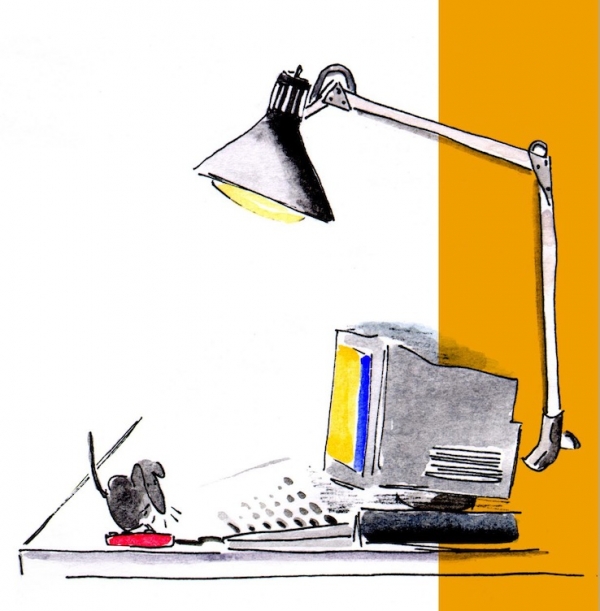This method of questioning and following the breadcrumbs is how I became an artist. As a child, I was stationed in the kitchen at my child-size worktable where I cut out images from wallpaper remnants and glued these elements of design to giant hatboxes. Perhaps this was the spark that caused me years later to create cut-paper collages. How did hatboxes and scissors get connected so many years later? I never took an art class, but I was attracted to art, design, color, the range of composition, and especially the materials. I have always loved art supply stores and walked into many seeking what I did not know. My favorite questions were, what is gesso, what is paper mache, how do I? The questions were endless. Aren’t you glad you don’t work in my favorite art store? What if we asked questions instead of assuming we already knew all the answers? I want to know how Sonia Delaunay, for example, became the first female artist to create wearable art.
Or, what about Vera Neumann, the ladybug Vera, who I worked for, what got her started? How did success arrive at her door? Vera painted a group of designs and as it happened, it was George, her Austrian-born husband from a textile family, who went out into the marketplace to buy linen fabric for making placemats. It was during WWW II and what he discovered was that the textile mills were only weaving fabrics for uniforms. What he likely asked next was, “what is available?” The answer was parachute silk. Silk wouldn’t make great tablecloths, or uniforms, but it sure would make great scarves.
One spot-on question is what started Vera Industries that grew into a $100 million company. George didn’t take no for an answer, he just asked a different question, and arrived at a different product collection. Mixing it up with things we don’t know is a healthy approach to life. I like to tune into TED Talks. TED.com features curated speakers who are invited to tell their story, to share their passion or their breakthrough idea. In their allotted 17 minutes, the viewer is introduced to someone speaking about a revelation or experience. And it is always inspiring. Most Saturdays, I find 17 minutes to listen to that weeks’ featured talk no matter the subject matter. I’ve never been disappointed.
My most recent curiosity is how can we see the supportive elements for creating our lives? What if our new BUTLER organizing station could serve as a movable vision board? As our creativity is ever changing, what if our vision for our life wasn’t glued down but allowed to move and change easily?
Come be curious with me in my Chester studio for the most curious of curious workshops I’ve created to date. It’s designed to be fun, nonthreatening and highly productive as we dive into being curious about what’s next?
Curiouser and curiouser...
Curiouser
and
curiouser...

We can’t Google our next brand new invention. We won’t find it there. It does not exist yet.
Nor does the all-knowing web browser offer up a vision or direction for our lives.
So that leaves us with, where do we look, who do we ask? Where does it live – that elusive thing or answer we are searching for?
It lives within us, waiting until we’re ready to ask.
I’m intrigued by Brian Glazer, the award-winning movie producer, “Apollo,” “A Beautiful Mind,” “Splash,” and his recent book titled, “A Curious Mind: The Secret to a Bigger Life.”
Curiosity is a learning process. It’s also a means of overcoming fear, and as Grazer writes, “It never lets you down, and it’s curiosity that motivates discovery.”







